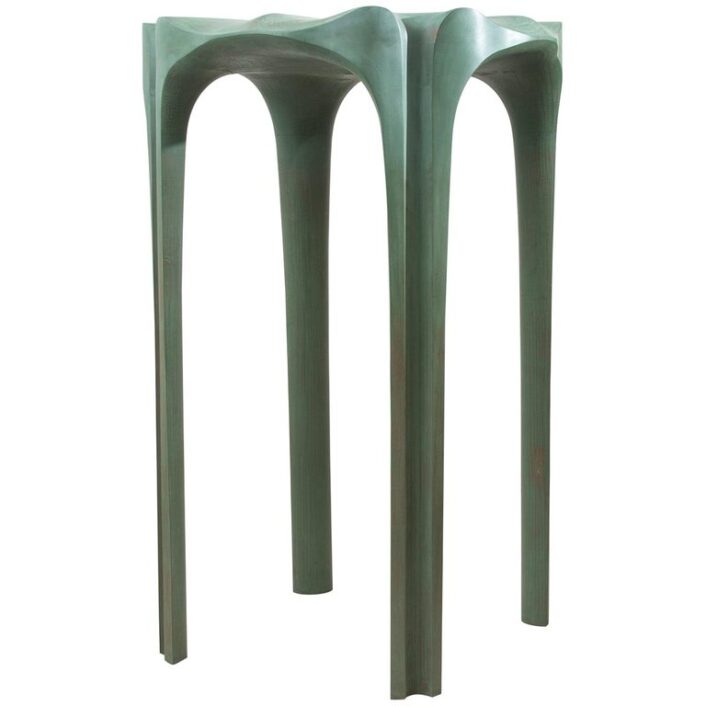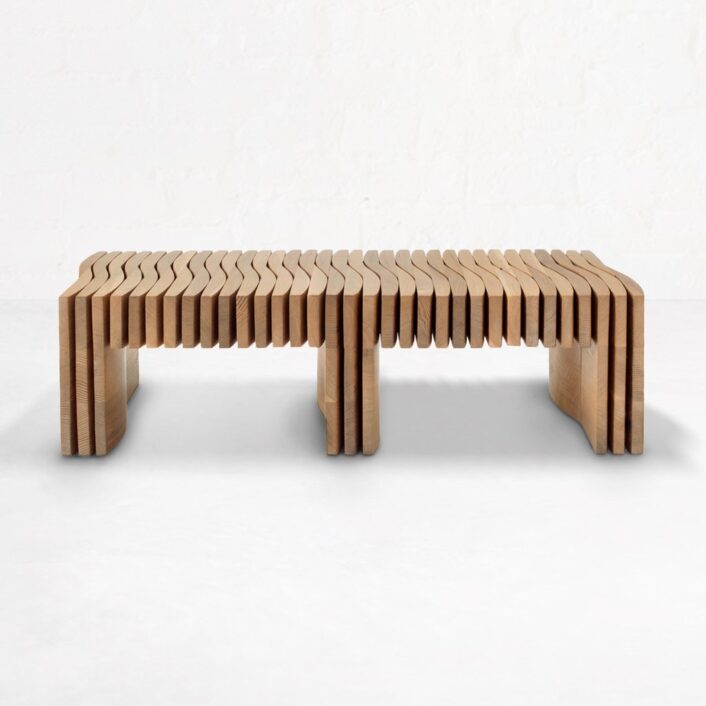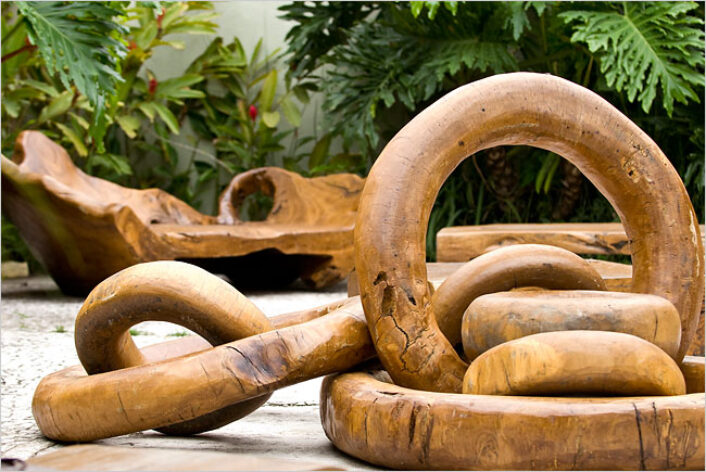Design
The artistry behind Chapo Creations
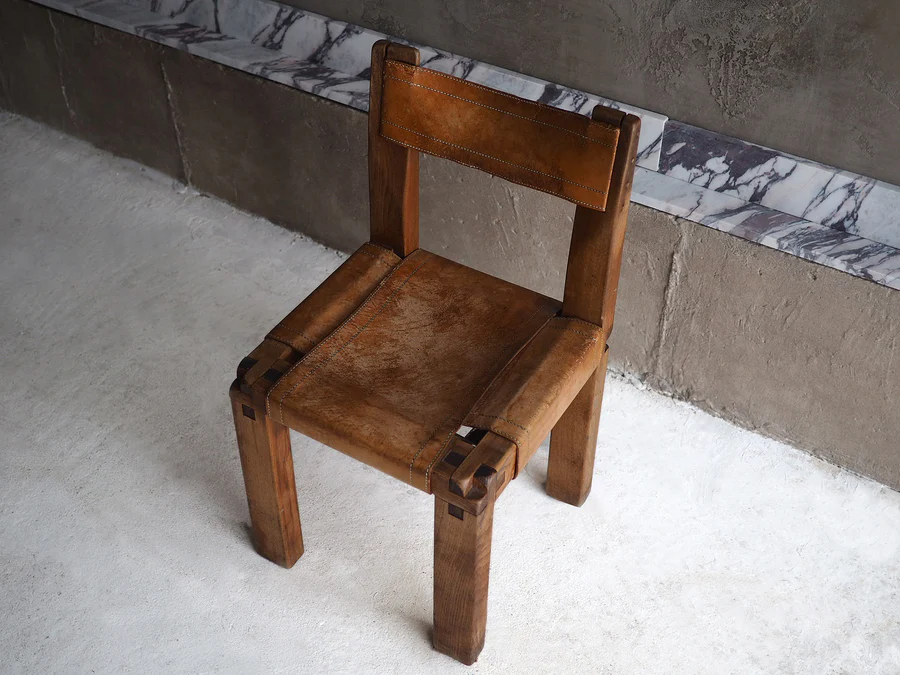
Vintage Pierre Chapo S11.
Image courtesy of: Brendan Tadler
When it comes to handcrafted woodwork, the French designer and cabinetmaker, Pierre Chapo, is a master and a true icon. Influenced by modernism, the designer created furniture that has become known for both its durability and timeless design.
Chapo’s work celebrates the beauty and individuality of wood. As a woodworker, he was especially adept at respecting nature… particularly, the elm and oak wood species that he employed. Taking advantage of the woods’ properties, Chapo worked hard to avoid metal joints. Many attest that Chapo’s work is similar to that of George Nakashima, a wonderful tribute.
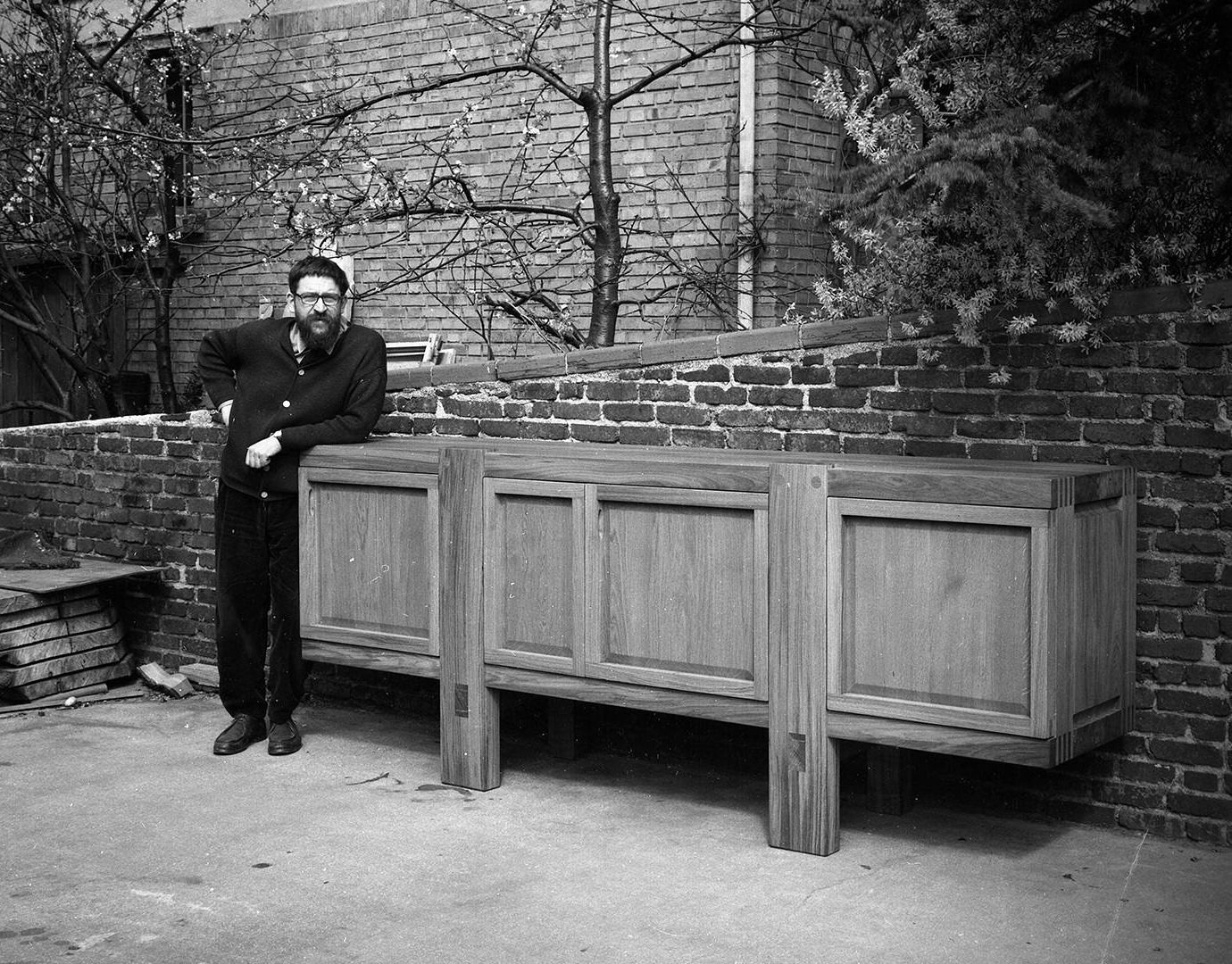
Chapo in front of the R16 sideboard, made from oak, circa 1967.
Image courtesy of: Commune Designs, (as featured in: Chapo Creations)
Initially, Chapo was interested in painting; however a chance meeting with a shipbuilding carpenter at the age of twenty introduced him to woodworking. An instant interest in wood lead the designer to study architecture at Paris’ École Nationale Supérieure des Beaux-Arts.
Following his studies, Chapo traveled through Scandinavia and Central America; he spent a year working in the United States prior to retuning to Paris where he began to wholeheartedly purse his desire to make handcrafted wood furniture. At the core of his ethos was his concern for both traditional methods and contemporary design; he mainly used solid oak, elm, ash, and teak wood.
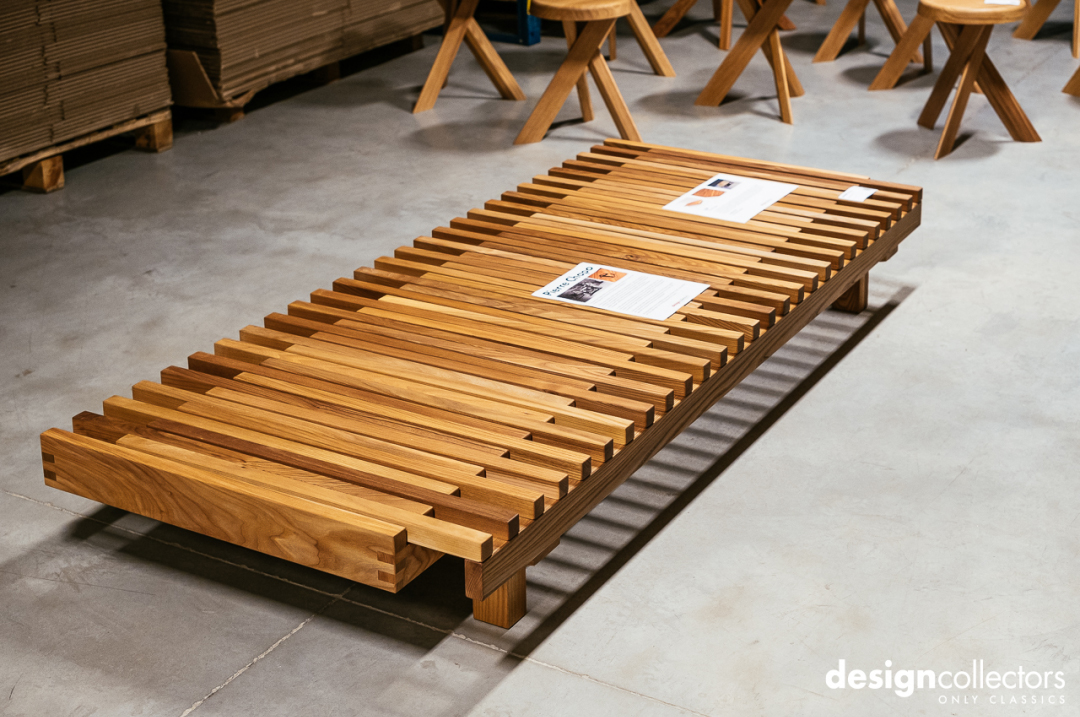
L07A Modular Bench, circa 1963. Made from solid elm. The amazing design was a (courtesy of Design Collectors) “technical feat with impeccable aesthetics.” The bench can easily be converted into a single bed, a double bed, or a bench without any mechanical interventions.
Image courtesy of: Design Collectors
Chapo’s original gallery was in Paris’ 13th arrondissement; in addition to his own designs, he presented works of other artisans he admired such as Isamu Noguchi. It wasn’t long before he began to collaborate on a number of formative pieces with Charlotte Perriand. However in 1967, Chapo moved to Provence and started his own furniture business.
Set on (courtesy of Magen Gallery, XX Century Design) “producing his own bold, rugged designs anchored in tradition.” In addition to his furniture work, Chapo was asked to lecture, both in France and internationally, on joinery, wood, cabinet-making, and artistic traditions.
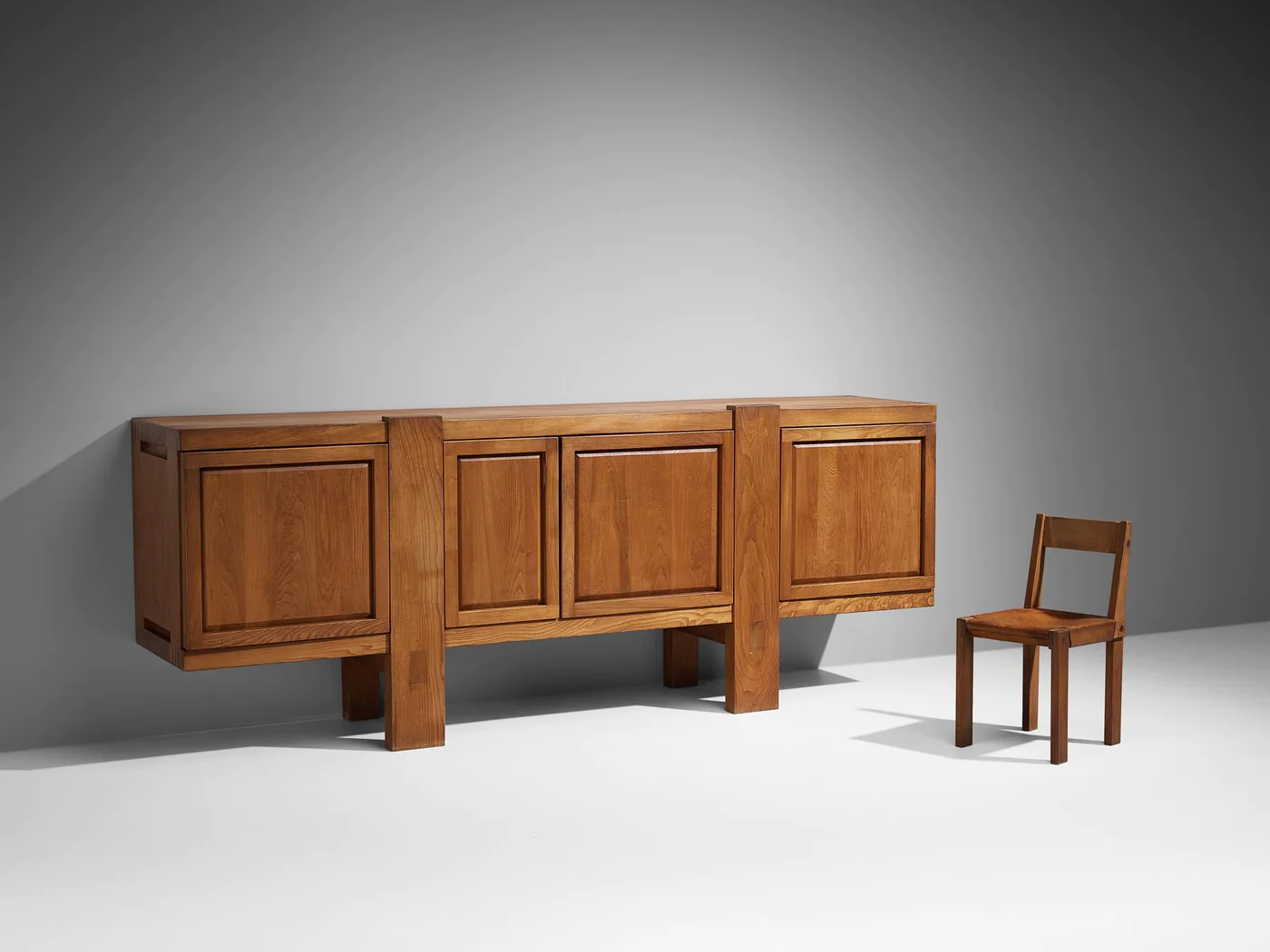
R16 Sideboard in solid elm, circa 1966. The most substantial piece Chapo ever designed, the credenza is almost ten feet long with horizontal and vertical lines that create a grid-like display. The doors are designed in an asymmetrical manner.
Image courtesy of: Morentz
There is no doubt that the wood maestro was revolutionary in post-war design. The designer, born into a family of craftsmen, was relatively unknown in design circles until the 1960s when he (courtesy of The Socialite Family) “saw the beginning of recognition and the establishment of a solid reputation which transcends borders.”
Much of Chapo’s work was via special commissions… later on, those designs would often become available to the public. The designer was inspired by other architectural designers including Frank Lloyd Wright’s balanced lines and Corbusier’s studies on propositions, and the Bauhaus movement.
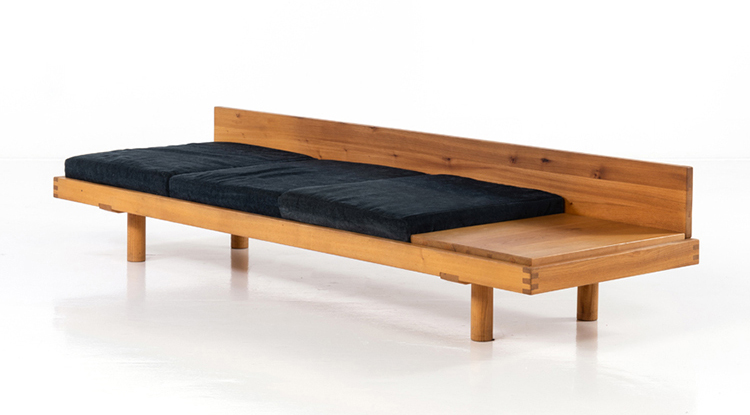
L09 Banquette is more of a seating system – select from a variety of lengths as well as cushions.
Image courtesy: Chapo Creations
Having designed over 2,000 pieces during his forty year career, Chapo remained motivated by three principles: material, form, and function. Today, the firm produces made-to-order furniture in their workshop. Most of the pieces are made from elm and oak, and there is always a concern for responsible forest management.
